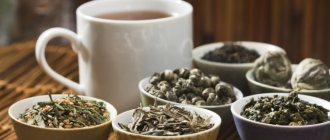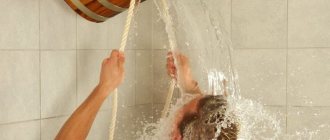Inexperienced bathhouse visitors sometimes feel sick after a steam room. And it is important that at this moment there is a person nearby who knows how to act in each specific situation. There can be many reasons for ailments, as well as troubles with well-being: from chronic diseases to defects in the construction of the building made by the builders when constructing the steam room. Therefore, before your first bath day, it will not be a bad idea to find out what can cause you to feel ill after visiting the bathhouse. And even avid lovers of steam baths should periodically refresh their memory of this knowledge in order to always be ready to help others or themselves at a critical moment.
Why does it feel bad after a bath and what ailments are possible?
Not everyone can stay in a closed, hot and humid room for a long time. Injecting heat and steam is nothing more than creating high temperatures and humidity. This is what provokes an increase in blood pressure, shortness of breath and weakness.
Even “super-seasoned” bathhouse attendants go out to rest, cool down, douse themselves with cool water, bathe in sauna fonts, and plunge into the coolness of the river.
Man is created from flesh and blood, our body has a limit to its capabilities. You should not try to set records for staying on a bath shelf. The first law of the bath is the alternation of heat and cold, mandatory contrasting water procedures.
Oak broom
A traditional bath “accessory” is a broom. But not any kind, but oak: it is oak that relieves nervous tension and relieves stress. In order for the broom to retain its beneficial substances, it must be steamed in a special way. Place a dry broom in a bowl of lukewarm water for 15-20 minutes. Then shake it and heat it over the heater for 20-30 seconds, turning it in different directions. If the broom is fresh, soaking in a basin is not required.
They also steam with an oak broom in a special way. Try not to be whipped by it, but only fan yourself - pumping hot air, almost without touching the body. Shake the broom occasionally if water starts to drip from the leaves.
Red spots on the skin
The appearance of red spots on the skin during or after a bath is a normal reaction of the body. Blood moves in the body not only through veins and arteries. Faithful assistants of the circulatory system, capillaries play an important role.
Capillaries form a huge subcutaneous mesh that covers every part of our body. In ordinary, everyday life, we do not even notice the enormous work that capillaries perform, delivering blood to the most secluded corners.
As soon as there is an increase in body temperature, blood flow to the capillaries increases. In some areas of the skin there are more capillaries, which is why redness occurs.
When hovering with a broom in normal mode, the blood vessels are stimulated, blood flows faster, which is why the skin turns red. But, if you hit the body with a broom with all your strength and stupidity, you get real blood stains and even bruises. The capillaries are injured and, as a result, simply burst.
Red spots on the skin during and after a bath are not at all dangerous.
The redness will go away as soon as the body temperature begins to subside, blood flow decreases, and heart contractions return to normal. How to do this?
You need to douse yourself with cool water, sit and relax in the dressing room, drink some water.
Why do you need a sauna?
Viruses, tumors and cells affected by toxins do not tolerate heat. That is why saunas are so useful, because they fight all problems through the largest organ of the human body - its skin. Regular trips to the sauna activate your skin through sweating, which helps your body rid itself of heavy metals and toxic chemicals and allows you to achieve optimal health. In fact, one 2012 study demonstrated that sweating in a sauna is extremely effective in ridding the body of harmful heavy metals such as cadmium, arsenic, mercury and lead.
While many people will find it difficult to cope with the intense heat that accompanies a sauna session, heating up to 60-90 degrees Celsius is necessary to induce heavy sweating. Saunas come in a wide variety of types - heated with wood, electricity or gas. There are also infrared options that heat the body but leave the air cool. This type of sauna does not require preheating, which allows you to save electricity (or other energy source) and time. There are also infrared bulbs that can provide warming and stimulating color therapy. Research shows that an infrared sauna is most beneficial for cleansing the body of harmful substances, as the deep penetration of infrared energy allows cells to more effectively remove toxins from the body.
Redness of the eyes
Most often, bathing beginners encounter redness in the whites of their eyes. A microscopic red capillary network appears in the corner of the eye. This is already a serious sign of deterioration in well-being.
Most often this happens in people prone to high blood pressure and newcomers to the bathing kingdom.
Not everyone can handle high bath temperatures. If you just get carried away in the steam room, sit on the top shelf longer than the allotted time, your eyes will turn red.
To avoid such troubles, it is necessary not only to reduce the time you enter the steam room, but also be sure to monitor the time you spend in it. A bath cap is necessary to protect your head from overheating.
You need to go out to rest more often, be sure to douse yourself with cool water and drink plenty of fluids.
Reasons for feeling unwell after visiting the steam room
The most common negative effect after a bath is a loss of strength in a person. This happens because some visitors to the steam room consider it a place of relaxation and go there after a hard day at work or an exhausting sports training. In this case, there is a risk of losing even more strength, because high temperatures place additional heavy stress on the human body. If you have already come to the bathhouse after a difficult day at work or immediately after a workout, then relax in the steam room on the bottom shelf, where the air temperature is the most comfortable. Stay there no longer than 5 minutes at a time.
In public baths, especially on weekends, the establishment may be sold out. Because of this, visitors in the steam room are forced to sit tightly together, or even stand at full height. But it is recommended to steam exclusively in a horizontal position. At the top, at the level of a person’s head, the hottest air is concentrated, which will heat the back of the head and temples. At the same time, there is a significantly smaller thermal effect on the feet, and they will remain practically cold. Due to uneven heating of the body, interruptions in the functioning of the cardiovascular system may begin. Therefore, order a separate room for relaxation in a public bathhouse, or try to come on those days or times when there are few visitors.
Those who suffer from blood vessel diseases should definitely take this into account when visiting the steam room. The fact is that under the influence of heat, the vessels begin to expand and the amount of blood transported through them increases sharply. Because of this, a person suffering from this pathology quickly turns red in the eyes, which is caused by a jump in blood pressure. If you cannot deny yourself the pleasure of steaming, then follow simple rules so that you don’t get sick.
Increase the temperature in the steam room gradually and stay in it for a short time. It is better to make several short visits to the steam room in one session than a couple of long ones.
When bad habits become dangerous
Heavy smokers need to be more careful with bath procedures. Ideally, you should get rid of this habit or at least refrain from smoking while relaxing in the bathhouse. In the steam room, an increased load occurs on the human cardiovascular system, due to which the vessels dilate. And nicotine with tar, when it enters the body, provokes a narrowing of the bloodstream. In the simplest case, such changes cause headaches, and in the worst case, it can lead to death.
It is similarly dangerous to relax in a bathhouse while drinking alcoholic beverages. The heat in the steam room dilates the blood vessels. Alcohol also expands them, but for a short period of time, and then alcohol sharply provokes their narrowing. A disruption occurs in the process of regulation of the body, after which the heart muscle begins to work for wear and tear. This is one of the reasons why you get a headache after a bath or sauna. But things can turn out even worse and end in a heart attack or stroke.
Following safety rules in the steam room will keep you healthy
In some cases, people enter the steam room with a full stomach after a heavy meal and begin to experience headaches and nausea. This is due to the double load experienced by their body. After all, he needs to cope with the digestion of food and at the same time adapt all his systems to high temperatures. But it is not recommended to steam on an empty stomach, because due to low blood pressure, a person may, again, get a headache. Therefore, it is recommended to have a light snack shortly before visiting the bathhouse, which will allow you to avoid both negative scenarios. Even in the steam room, you should refrain from expressing intimate relationships, since any increased activity in a hot, stuffy room leads to pain in the head and even in the heart.
How much time should you spend in the steam room? Beginners to the bath should limit themselves to five-minute visits to the steam room to avoid getting sick. And experienced steam lovers can afford to relax in it for 10–15 minutes. Between visits there is a break of at least half an hour. And don’t try to have a marathon with your friends by sitting in the steam room for a long time - this can result in heat stroke. Its symptoms:
- headache;
- dyspnea;
- increased body temperature;
- nausea.
Some vacationers, especially women, like to drip a few drops of essential oil onto the hot stones of the stove to give themselves aromatherapy in the steam room. But if you are in a steam room with a person prone to allergies, it is better to abandon this tradition. In some cases, even the aroma from birch or oak brooms can cause negative reactions in allergy sufferers. If you are one of the people prone to allergies to vegetation, then you are better off in the steam room without these bath accessories.
More often, beginners whose bodies have not yet adapted to extreme temperatures and humidity suffer from the negative consequences of visiting a bathhouse. In these cases, a person may experience dizziness, which then turns into nausea. The visitor to the bathhouse experiences weakness, and in some cases may begin to shiver. To avoid getting sick, don’t stay too long in the steam room, regularly replenish your water balance and cover your hair with a bath cap. The vessels located in the head heat up faster than others, and therefore it is important to reliably protect it from heat stroke. The best option is to show off in a felt headdress.
Another common mistake made by beginners is to believe that the higher the temperature in the bathhouse, the more profuse sweating occurs.
But in fact, it's just the opposite. You need to rest at a temperature that is comfortable for you, and simple recipes will help increase sweating. For example, before entering the steam room for the second time, rub your body with a mixture of honey and table salt - and the sweat will flow from you in such streams that you will even need to wipe your body with a towel. Do not tolerate scalding heat under any circumstances. It's better to rest on the bottom bunk than to get heatstroke.
Feeling unwell may be a sign of serious illness
The Russian bath traditionally includes dousing with cold water, and in winter - swimming in an ice hole or wallowing in snowdrifts. Some people believe that you should not wet your head before jumping into a pool of cold water, but this is a misconception. After the blood vessels have expanded in the steam room, they sharply narrow in the cold pool. The blood is rapidly pushed into wider vessels, and pulsation begins in the head. This can lead to such negative consequences as:
- headache;
- lethargy;
- difficulties in the functioning of the speech apparatus.
In order not to impair cerebral circulation, it is recommended to cool down a little before jumping into an ice hole or pool. A rarer occurrence than a headache in the bathhouse is nosebleeds. This trouble can be caused by several factors. Firstly, blood may start to flow due to the drying out of the nasal mucosa in the hot, dry space of the sauna. Secondly, this may be a symptom of overheating of the body. This happens in the summer heat with sunstroke. A similar nuisance can happen in a bathhouse if you ignore the rules for visiting it. Thirdly, this may be one of the signs of vegetative-vascular dystonia. If before the bleeding began you had tinnitus with a headache, and blood flows from the nose along with watery discharge, then most likely this is the disease.
Fainting in a bathhouse can be caused by several reasons. Among the most common factors are the following:
- arrhythmia;
- angina pectoris;
- heart attack;
- deficiency of oxygen in the blood;
- nerve diseases;
- stress;
- fright
It can also become bad due to a long stay in a stuffy room with high humidity, and such conditions are precisely what a steam room characterizes. In addition, sudden changes in environmental conditions can lead to fainting. For example, when you run out of a hot bath and dive into an ice hole or a snowdrift.
In some cases, fainting conditions can even be caused by a sharp change in body position in the steam room - from horizontal to vertical.
If you often have a headache after a bath, this may be an alarming signal of the development of a number of complex pathologies, such as:
- oncology;
- thrombophlebitis;
- migraine;
- organic brain damage;
- hypertension;
- heart disease;
- increased intracranial pressure.
After visiting the bathhouse, the state of health with these diseases sharply worsens. Some people who are aware of their problems with the vascular system, despite the diagnosis, continue to visit the steam room. But a bath in the presence of hypertension is strictly contraindicated. The danger of visiting a bathhouse with high blood pressure lies in the fact that the body’s weak circulatory system is unable to dispel the increased blood flow. This can cause blockage of blood vessels, which even threatens death.
Dark circles and darkening in the eyes
There are several reasons for the appearance of dark circles and darkening in the eyes:
- When there is a pressure difference between the upper torso and the lower
- Ailments can be triggered by a difference in blood pressure in the body and atmospheric pressure - the body does not have time to rebuild and adapt to the bath climate
- Blood did not reach the brain in the required quantity, it did not receive the necessary nutrition
- High bath temperatures, stuffy room, stale air
Rest in a ventilated, cool room, drinking plenty of fluids and sweet candy will help you cope with the illness.
It is advisable to lie down to rest, placing a damp, cool towel on your head.
Regarding nutrition
Everyone knows that nervous disorders go hand in hand with food disorders. When under stress, some people refuse food completely, while others, on the contrary, eat up their sadness with a huge amount of tasty treats. However, on the eve of visiting the bathhouse and during it, you should not overeat, much less starve. Bath procedures reduce the acidity of gastric juice, thereby reducing the body's ability to digest food and, at the same time, increase appetite. The following anti-stress vitamin recipe is considered ideal by bathhouse adherents to overcome the feeling of hunger on the eve of or during a bathhouse visit. Pour 1 tablespoon of oatmeal with 3 tablespoons of water and leave for several hours. Add the juice of half a lemon, grated apple or pear (or 1 cup of strawberries, raspberries, currants, blueberries, blackberries), a tablespoon of condensed milk or sour cream. Stir well. Sprinkle with chopped dried fruits and walnuts, almonds or pine nuts.
Bon appetit, relief from stress and good sleep!
source
Feeling sick in the bath
The feeling of nausea is far from an unpleasant sensation; I encountered such a problem twice:
- I went to the bathhouse on an empty stomach
- When I got burned in the bathhouse
We can deduce the law of the appearance of nausea in a bathhouse - it occurs when there is insufficient blood supply to the brain, low blood hemoglobin, and poisoning with toxic carbon monoxide or carbon dioxide (for example, from smoking).
In the hot sauna kingdom, the following happens: the blood vessels of the brain expand when exposed to heat, and as a result, the pressure decreases.
There is a shortage of red blood cells in the circulating blood volume; in other words, the brain lacks oxygen supply. The body begins to save itself - systolic pressure rises.
This is the upper pressure indicator - the force of blood pushing out by the heart. The heart begins to contract more strongly, and the level of blood ejected into the arteries increases. Nausea and dizziness appear.
To avoid such troubles, you need to maintain the temperature in the bathhouse and not overheat. And before the bath you need to eat lightly and, of course, not smoke.
Well, I wrote in a separate article why people get burned out in the bathhouse and how to prevent such mistakes. Follow the link and get acquainted with my sad story, as well as what to do in such cases.
When can you drink beer?
When visiting a bathhouse, beer is not harmful, but useful as an inhalation agent. A drink diluted with water and splashed onto the stones instantly spreads the aroma of freshly baked bread. The hop bitterness of beer will calm the nerves, quench pain, and relieve colds. The vapors from the drink prevent the growth of bacteria and are an antiseptic.
When time passes and the body cools down, beer after a bath will bring special pleasure. An amber drink, rich in microelements, amino acids, vitamins B and P, activates metabolism and rejuvenates skin cells. After a bath, drinking a glass of beer is useful for people suffering from gastritis.
One glass (no more) will free the stomach from excess mucus and dry it out. It is useful to make a face mask from the cool foam of a live drink, which will improve blood flow, increase skin elasticity, and close pores. When you rinse your hair with beer, dandruff disappears, a natural shine and silkiness appear.
Dizzy in the bath
Dizziness occurs for several reasons:
- Blood sugar dropped sharply
- Severe overheating of the brain
- A sharp outflow of blood from the brain
If you feel dizzy in the bathhouse, this is a sure signal that it’s time to end the pleasant procedures. You need to rest in a cool room, cool your overheated body, wipe yourself dry, change clothes and go home to drink tea!
You should not neglect alarming symptoms, because the body itself sends warnings about poor health. If you do not listen to such signals, then more serious consequences are possible, for example, loss of consciousness, fainting.
Sleep separately from your spouse
If you suffer from insomnia, it is better to sleep separately from your spouse. Ideally, partners should have the same sleep schedule. Otherwise, you both won't be able to get enough sleep. In addition, your partner may snore. This will make it very difficult for you to fall asleep. Sleeping in separate beds will allow each spouse to get a good night's sleep.
When toothpaste is harmful to children: permissible age doses
“Olga” from the series of the same name: the tragic fate of actress Yana Troyanova
25 children of a childless man: an extraordinary reunion
Healing decoctions
You can add not only water to the heater, but also soothing herbal infusions. For example, from mint or oregano. Mint is uplifting and calming, while oregano strengthens the nervous system. If you are very nervous or feel mentally fatigued, dissolve a little pine extract in a bowl of hot water and sprinkle it on the stones.
For sleep disorders - difficulty falling asleep, frequent awakenings at night - you can try the “classic” infusion. Take 1 part valerian root, 2 parts mint and 2 parts motherwort herb. Pour 1 cup of boiling water and heat for 10 minutes in a water bath. Then leave for 30 minutes in a warm place. Dilute 1/2 cup of infusion in 1 liter of water and sprinkle on the stones when you steam. If you suddenly feel sleepy, you can take a nap in the rest room.
Also, for insomnia, thyme infusion has proven itself very well. First prepare the steaming. Pour 2 tablespoons of thyme into a gauze bag (5-6 layers - so that the grass particles do not come out), tie it and put it in boiling water for 20-30 minutes. Then dilute 1/2 cup of steaming water with 1 liter of water and spray on shelves, walls and stones. Also, to enhance the effect, you can rinse with thyme infusion after the bath (do not wipe yourself off).
Tea for a good sleep
In between visits to the steam room, it’s a good idea to drink some soothing tea - you’ll sleep like a baby. The most convenient way is to brew it at home and pour the finished drink into a thermos. Drink the tea warm, adding natural honey. The temperature of the drink should not exceed 45°C: if it is higher, honey loses its valuable properties.
Recipe 1. Take 2 teaspoons of thyme and rose hips, pour 2 cups of boiling water over them and let steep for 10 minutes.
Recipe 2. Mix St. John's wort, oregano and mint herbs in equal proportions. Pour boiling water over the mixture (1 teaspoon of mixture per 1 cup of boiling water). Let it brew for 15 minutes.
There is also a special miracle drink against insomnia. Drink pre-prepared 1/4 glass after the bath and on the following days, before going to bed. The recipe for the drink is simple: take 50 grams of dill seeds, pour in 0.5 liters of Cahors and cook over low heat for 15-20 minutes. Add 1 tablespoon of powdered celandine herb and wrap tightly. Let it brew for 1 hour, then strain and squeeze out the remaining raw materials.
source











